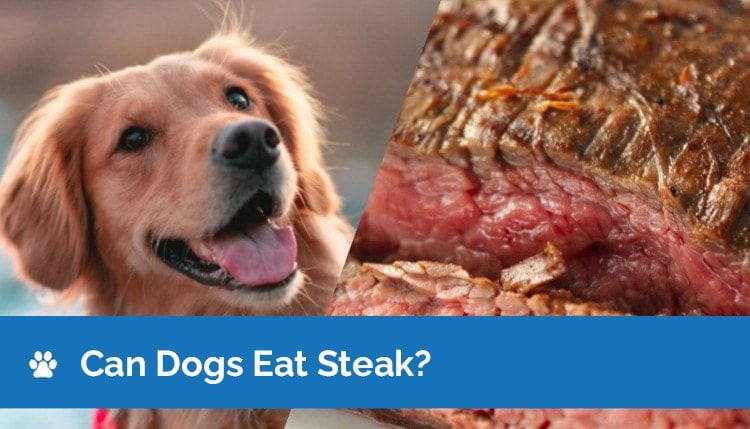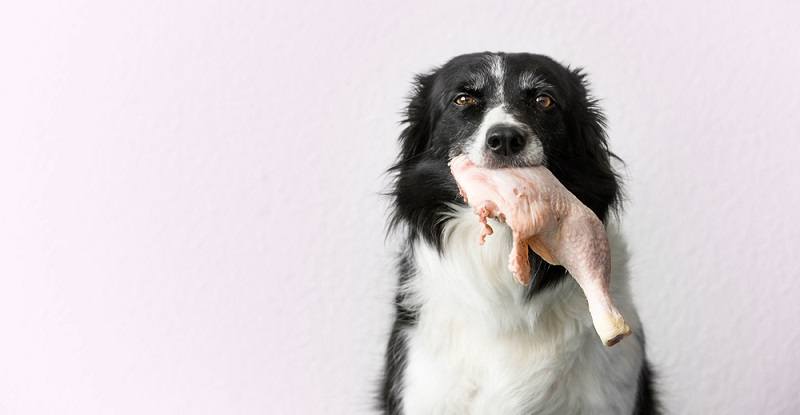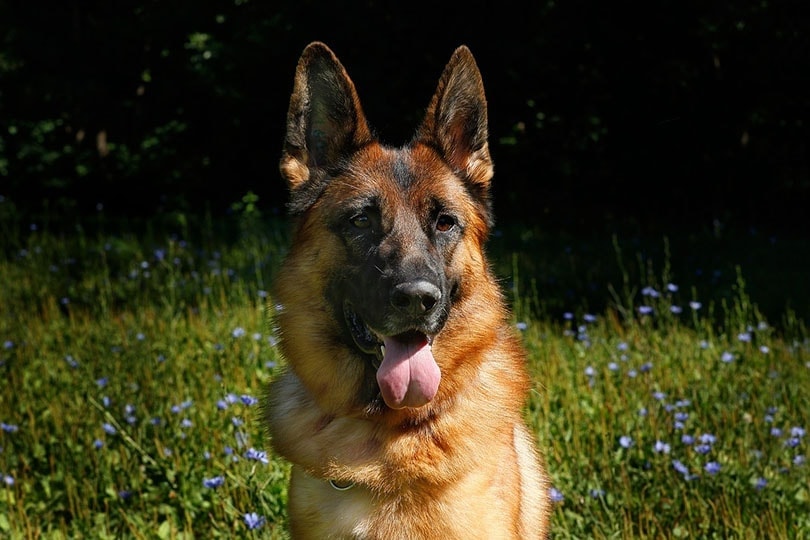Steak is a very popular food in many homes, and if you just became a dog owner, it’s perfectly natural to have a lot of questions about the safety of feeding your dog steak and other common foods. Is steak safe for dogs? The short answer is yes. Your dog can eat steak, but there are some things to consider before you make it a regular part of their diet
Join us while we take a look at the pros and cons of feeding your dog steak as well as the best ways to serve it to keep your dog healthy and happy.
Is Steak Bad for My Dog?
There are some ways that steak can be harmful to your dog.
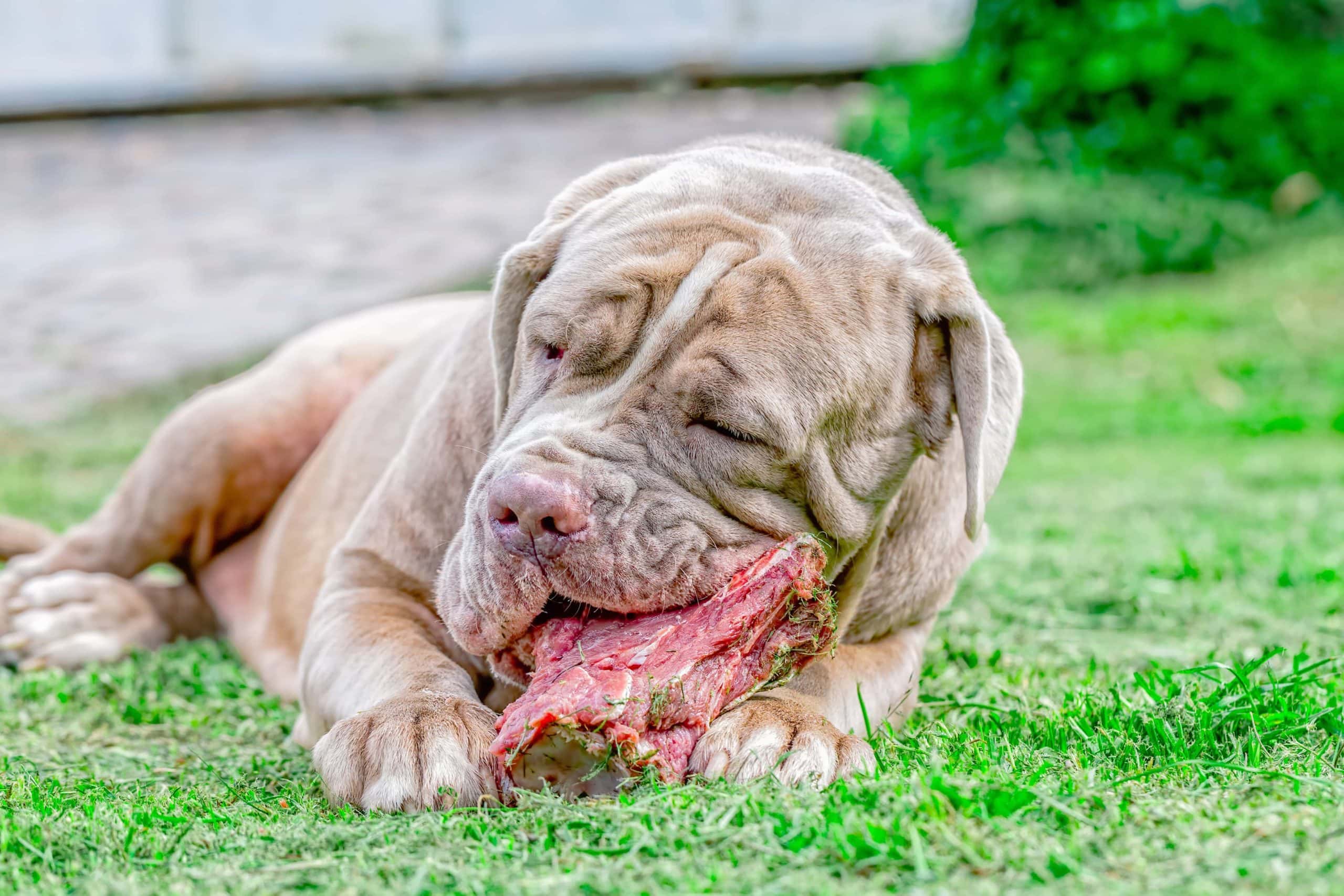
High in Cholesterol
Steak is high in cholesterol, and a three-ounce serving contains close to 60 milligrams, which can diminish heart health.
High in Fat
Another downside to feeding your dog a lot of steaks is that it contains a lot of fat (7.6 grams), and most of that fat is saturated. Saturated fat can lead to heart disease in your pet as well as obesity. With obesity in dogs at an all-time high in America, you should take every step to keep your pet healthy.
Raw Steak
Fresh raw steak is good for your dog and is an excellent source of protein. However, raw meat can very quickly grow bacteria, which can upset their stomach and cause diarrhea. Some raw meat can also contain E Coli and other bacteria when you purchase it that can be more harmful to pets than humans.
Another thing to be concerned about when feeding your dog raw meat is that they might throw the meat around, contaminating unintended surfaces with the raw meat, which can cause bacteria to grow in unexpected areas of the home. If you feed your pet raw meat, you will need to contain it to a small area that you can sanitize when your pet finishes eating.
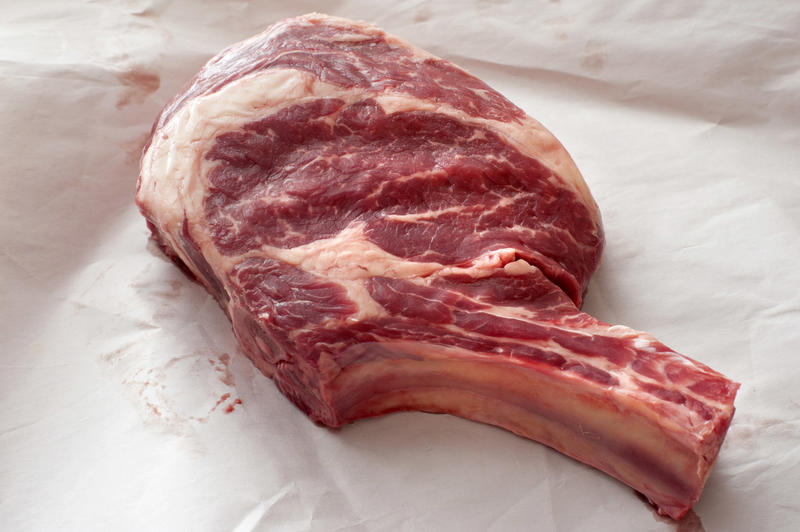
Other Ingredients
Another problem with feeding your dog steak is not the steak but what you may be feeding along with it if you are giving your dog table scraps.
Butter
Many people put butter on their steak, and though it’s only a small amount, many dogs are lactose intolerant and sensitive to foods like butter, so eating it can cause an upset stomach. Butter is also high in fat, which can lead to obesity in your pet.
Spices
Many common spices used to season steak can be harmful to your dog. Onions can cause vomiting and diarrhea and can also damage the red blood cells of your pet. Salt is another spice many people put on a steak that can lead to increased thirst and bloating, as well as fatigue.
Is Steak Good for My Dog?
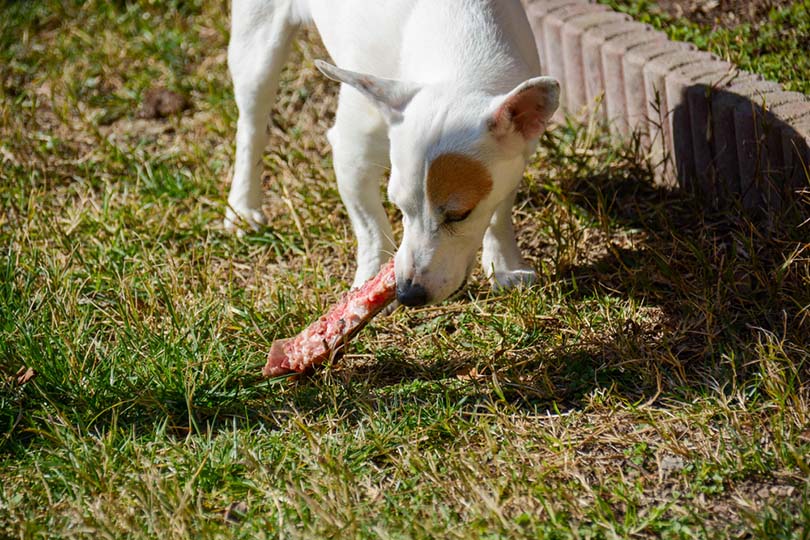
Steak is an excellent source of protein, iron, vitamin B6.
Protein — Just 3 ounces provides your dog with 26 grams of protein. Protein helps your dog build strong muscles, provides them with energy, and helps them feel full longer.
Iron — Iron is a building block of red blood cells, and it is required by your pet to keep them from becoming anemic.
Vitamin B6 — Vitamin B6 is a required nutrient that takes part in countless chemical reactions in the body.
How Should I Feed Steak to My Dog?
You should feed your dog steak as an occasional treat due to the high cholesterol and saturated fat present in the meat. We recommend limiting the portion to no more than three or four ounces and cooking it first unless you are outside and sure the meat is not contaminated.
Grill, pan-fry, or broil the steak to at least medium-rare with no spices or oils. Allow it to cool and cut it into bite-size pieces your pet can manage and serve as is.
The cooked steak will keep for several days in the refrigerator so you can cut it into smaller pieces and have treats for several days to help reduce how much cholesterol your pet eats at once while providing them with a treat they will enjoy.
Conclusion
When feeding your dog steak, the best choice is to cook it first and only provide small servings to help keep heart health and prevent the onset of obesity. However, in moderation, steak can be a great source of protein that your pet will love.
We hope you have enjoyed reading over the health benefits and risks of feeding steak to your dog. If we have helped answer your questions, please share this guide to dogs and steak on Facebook and Twitter.
Featured Image Credit: Roundhere44, Pixabay

